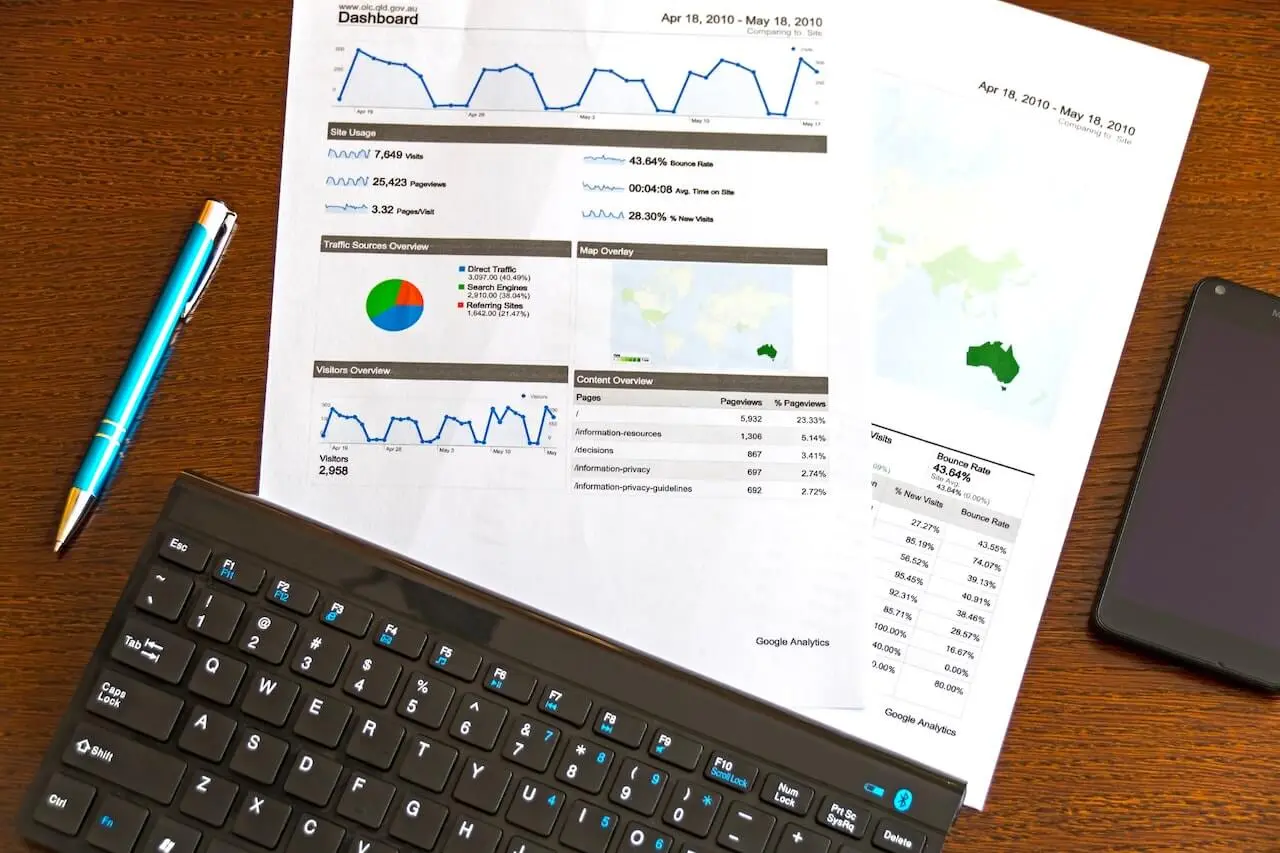Originally published October 17, 2023 , updated on June 21, 2024
In today’s saturated marketplace, we all understand how challenging curating and creating content strategy for our audiences can be. Crafting content that resonates with the reader and drives them to take action is no easy task. This is where the customer or buyer’s journey concept becomes critical.
By understanding the various stages of the customer journey, you can tailor your content to align with your potential customer’s needs and goals, making it more relevant, engaging, and likely to convert them into loyal customers.
But despite its importance, many business owners and marketers still struggle with understanding the customer journey and creating content that aligns with it. In this article, we’ll dive deep into the concept of the customer journey and provide actionable tips and strategies to help optimise your content at every stage of the buyer’s journey.
At the end of this article, you’ll have a solid understanding of the customer journey and how to tailor your content to meet the needs of your audience at every stage. Armed with this knowledge, you’ll be able to create content for each buyer’s journey that is both informative and engaging, resulting in higher traffic, more leads, and increased revenue.
So, let’s get into it.
Understanding the Customer Journey

The customer journey is a crucial aspect of the marketing process, providing a roadmap for businesses to understand how and why customers make purchasing decisions.
The journey begins with awareness, moves on to consideration, and ends with the decision stage. At each stage of the customer journey, buyers have different needs and mindsets.
By understanding the different stages and buyer needs, you can build a content creation strategy that guides customers along the journey and ultimately drive sales.
Let’s take a closer look at each stage:
1. Mapping Content to the Awareness Stage
The awareness stage of the customer journey refers to the initial phase where a potential customer becomes aware of your brand, product, or service. The key objective during this stage is to grab the customer’s attention and showcase the value proposition of your brand or product.
In this stage, your brand has the opportunity to make a positive impression on potential customers by creating high-quality content that highlights the benefits of your product or service.
Creating content that raises awareness and grabs attention is crucial to building a strong brand image and gaining customer loyalty. Brands must create content that is engaging, informative, and visually appealing content to capture potential customers’ attention.
You can use a variety of content types to raise awareness at the beginning of the customer journey. One effective technique is to create blog posts that highlight the benefits of your product or service. You should write these posts in an engaging, conversational tone to pique the customer’s interest and provide valuable information.
You can also use social media to promote your brand through creative content, such as visually pleasing graphics and attention-grabbing videos. Videos, in particular, are an excellent tool for capturing your customer’s attention and conveying your brand’s message in an engaging way.
By using a variety of content types, including blog posts, social media content, and videos, you can effectively reach potential customers at the beginning of their customer journey. Of course, this is no easy feat, and using content strategy services can help.
2. Creating Content for the Consideration Stage
The consideration stage is a crucial phase in the customer buying journey because it’s the point at which individuals start to evaluate different options and look for solutions to their problems.
During this stage, prospective customers weigh their options’ pros and cons, considering factors such as price, quality, and suitability. One of the primary objectives of this stage is to provide the customer with educational content that provides them with solutions to their problems. This means your content creation strategy must explore the features, benefits, and drawbacks of different products and services and how they can meet the customer’s needs.
To develop effective content for the buyer’s journey in the consideration stage, you should create informative materials highlighting the unique selling points of your products or services. In addition, you should always present high-quality content in an engaging and visually appealing format relevant to your target audience.
The types of content you might consider in this stage include e-books, case studies, and comparison guides. E-books provide an in-depth overview of your business’s products, services, features and benefits.
Similarly, case studies offer real-life examples of how your business’s product or service has solved the problems of other clients. Comparison guides, on the other hand, evaluate and highlight the differences between your business’s products and those of its competitors, allowing potential customers to make informed decisions.
When in doubt about creating this yourself, you can outsource the work to a professional content creation agency.
3. Tailoring Content for the Decision Stage
The decision stage of the customer journey is a crucial step towards the final conversion. At this stage, potential customers have done their research and are actively considering their options.
It’s important to note that, during this stage, customers are likely to have objections or concerns that need addressing. Crafting content that specifically addresses these objections while promoting conversion is key to success during the decision stage.
Customers are more likely to feel confident about their purchase decision if you provide them with clear and detailed information about your product or service. Similarly, providing free trials or demos allows customers to experience the product first-hand and helps eliminate potential objections or concerns. Using testimonials is also an effective way to showcase the value of a product and help build trust with potential customers.
Overall, the decision stage of the customer journey is a critical point in the conversion process and requires well-crafted content that addresses objections and highlights unique value propositions.
Optimising Content Delivery Channels

Each stage requires a different approach and channels of communication to connect with potential customers. One of the most effective ways to be discovered by potential customers is through search engine optimisation (SEO) and incorporating relevant keywords to enhance your brand’s visibility.
In the awareness stage, where buyers require information about specific products and services, you need to have a strong presence on platforms like social media, email marketing, and other relevant channels to create brand awareness and generate leads.
However, in the consideration stage, where customers start scanning the market for different options, e-commerce development for websites and online stores is more appropriate for capturing attention and driving sales.
Finally, in the decision-making stage, customers need assurance and value; therefore, content on your website, social media reviews, and email campaigns that provide prompt feedback will help retain customer loyalty.
Ensure you use appropriate channels tailored to each stage of the buyer’s journey that cater to your potential customer’s needs. Remember to include these in your content creation strategy and when curating your content for the buyer’s journey.
Personalisation and Automation in Content Delivery
Personalised content based on customer preferences is essential to effective marketing in today’s digital world. A personalised approach ensures that customers receive relevant information that meets their specific needs.
You can implement marketing automation to deliver personalised content in several ways, such as segmenting email lists based on customer behaviour and interests, personalising web pages based on what customers have viewed, and using chatbots to suggest products based on customer queries.
Additionally, implementing automated workflows for lead nurturing and follow-ups for abandoned shopping carts can help build customer loyalty and increase conversions. However, it’s crucial to implement best practices to ensure that personalisation and automation do not become intrusive or spammy.
It’s also essential to ensure that customers have control over their data and can opt out of receiving communication anytime. A professional content strategy agency understands the ins and outs of perfecting this art.
Measuring and Analysing Content Performance
When evaluating the effectiveness of content throughout the buyer journey, selecting relevant metrics is crucial. Metrics should be tailored to each stage of the journey and should track engagement and conversion rates for each goal.
Utilising analytics tools is essential to track engagement and conversion rates. Tools such as Google Analytics and HubSpot offer insight into user behaviour, identifying patterns and trends that you can use to make data-driven improvements to content.
You can then make improvements based on insights from the analytics data, such as reworking calls to action or improving the user experience. If you need assistance setting this up or a better understanding of how to harness its power, it’s best to contact content strategy services.
By continuously monitoring and evaluating content metrics, marketers can make informed decisions and create impactful strategies to drive conversions and achieve overall marketing success.
Content Strategy for Long-Term Engagement
Building a content creation strategy that covers the entire customer journey is essential for businesses looking to attract and retain customers. You must first develop a comprehensive understanding of your customers to achieve this.
One effective way to accomplish this is by creating customer personas and segmentation. By doing so, you can tailor your content for the buyer’s journey to suit the unique needs and preferences of specific groups of customers.
Planning for ongoing content creation is also crucial, as it ensures you have a consistent stream of content at various customer journey stages. This allows you to address customers’ needs at every stage of their journey, fostering stronger relationships and helping drive sales.
Finally, aligning content with customer personas and segmentation helps ensure the content is relevant and compelling, enhancing engagement and ultimately driving conversions.

Case Studies: Successful Content Strategies
In today’s digital age, numerous examples of organisations have successfully optimised their content for the buyer’s journey.
One example is Amazon, which uses detailed product information, personalised recommendations based on past purchases, and an easy checkout process to enhance the customer experience. As a result, Amazon has become one of the world’s largest and most profitable online retailers.
Another organisation that excels in creating content for the buyer’s journey is Zappos, a leader in online shoe sales. Zappos offers a user-friendly website with detailed product descriptions, free shipping and returns, and exceptional customer service. By focusing on providing an excellent shopping experience, Zappos has built a loyal customer base and a reputation for top-notch customer satisfaction.
Key takeaways from these successful customer journey content creation strategies include personalised recommendations, clear and concise product information, easy checkout processes, and outstanding customer service.
By prioritising these factors, organisations can create a seamless customer experience that will result in higher satisfaction, retention, and profitability.
Conclusion of Content Creation Strategy
Aligning your content creation strategy with your customers’ needs is crucial. However, building an arsenal of content for the buyer’s journey can be challenging to get right and time-consuming.
If you need an extra set of hands to help with the job, you can contact a content strategy agency. At Goodman Lantern, our professional content strategy services are designed to assist businesses and organisations in curating the ideal content strategy that best suits their ideal clients, helping them seal more deals organically and sustainably.
Post Views: 1194


















